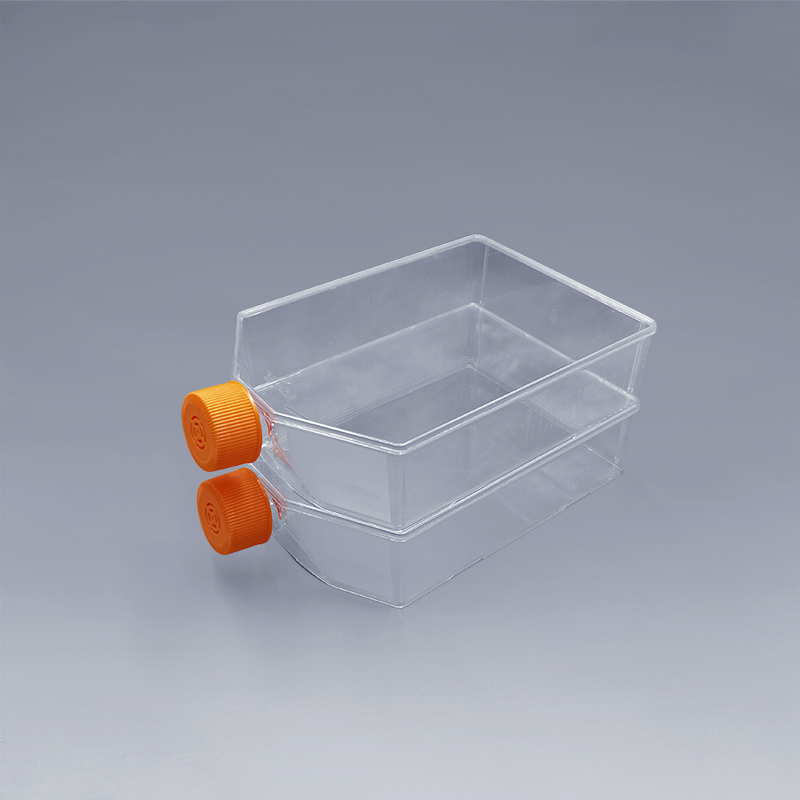کشت سلولی نوعی فناوری عملیات آسپتیک است که مستلزم آن است که محیط و شرایط کار باید عاری از آلودگی میکروبی بوده و تحت تأثیر عوامل مضر دیگر قرار نگیرد. فلاسک های کشت سلولی مواد مصرفی رایج در آزمایشات سلولی هستند. بدون DNA و RNase الزامات اساسی برای مواد مصرفی است. پس چگونه فلاسک های کشت سلولی می توانند عاری از DNA و RNase باشند؟
اتاق کشت سلولی و اصل طراحی برای جلوگیری از آلودگی میکروبی و عوامل مضر است و به محیط کاری تمیز، هوای تازه نیاز دارد. خشکی و بدون دود کارگاه های تولید فلاسک های کشت سلولی و سایر مواد مصرفی همگی کارگاه های 100000 سطح GMP و کارگاه های تولید داروهای انسانی نیز 100000 سطح هستند. بنابراین محصولات تولید شده در چنین شرایطی عموماً عاری از آنزیم های DNA و RNA هستند. و پس از بیرون آمدن محصول نهایی، از آزمایشهای تجزیه DNA و RNA نیز برای آزمایش محصول استفاده میکند و فقط محصولات واجد شرایط میتوانند کارخانه را ترک کنند. مواد مصرفی و ظروف مورد استفاده در کشت سلولی باید به موقع اتوکلاو شوند و در صورت عدم استفاده بیش از یک هفته پس از استریل شدن مجدداً استریل شوند. محیط کامل آماده شده، پانکراتین، PBS و غیره بهتر است در عرض یک هفته مصرف شود. در همان زمان، وضعیت سلول را هر روز بررسی کنید. در اتاق سلول باید راه رفتن و صحبت را تا حد امکان کاهش دهید. اگر سرفه یا عطسه می کنید، حتما پشت خود را به سمت میز فوق تمیز بچرخانید. بهداشت محیطی آزمایشگاه را حفظ کنید و پایه موفقیت آزمایش سلولی را بگذارید.
Qualified cell culture flasks are a key factor to ensure cell growth. Consumables and utensils used in cell culture should be autoclaved in time, and they should be re-sterilized if they are not used for more than a week after sterilization. The prepared complete medium, pancreatin, PBS, etc. are best used up within a week. At the same time, check the cell status every day. In the cell room, you should reduce walking and talk as little as possible. If you cough or sneeze, be sure to turn your back to the ultra-clean table. Keep the laboratory's environmental sanitation and lay the foundation for the success of the cell experiment.
The FAI climbed 5.9 percent year-on-year in the first 11 months of 2018, quickening from the 5.7-percent growth in Jan-Oct, the National Bureau of Statistics (NBS) said Friday in an online statement.
The key indicator of investment, dubbed a major growth driver, hit the bottom in August and has since started to rebound steadily.
In the face of emerging economic challenges home and abroad, China has stepped up efforts to stabilize investment, in particular rolling out measures to motivate private investors and channel funds into infrastructure.
Friday's data showed private investment, accounting for more than 60 percent of the total FAI, expanded by a brisk 8.7 percent.
NBS spokesperson Mao Shengyong said funds into weak economic links registered rapid increases as investment in environmental protection and agriculture jumped 42 percent and 12.5 percent respectively, much faster than the average.
In breakdown, investment in high-tech and equipment manufacturing remained vigorous with 16.1-percent and 11.6-percent increases respectively in the first 11 months. Infrastructure investment gained 3.7 percent, staying flat. Investment in property development rose 9.7 percent, also unchanged.
 English
English



















































